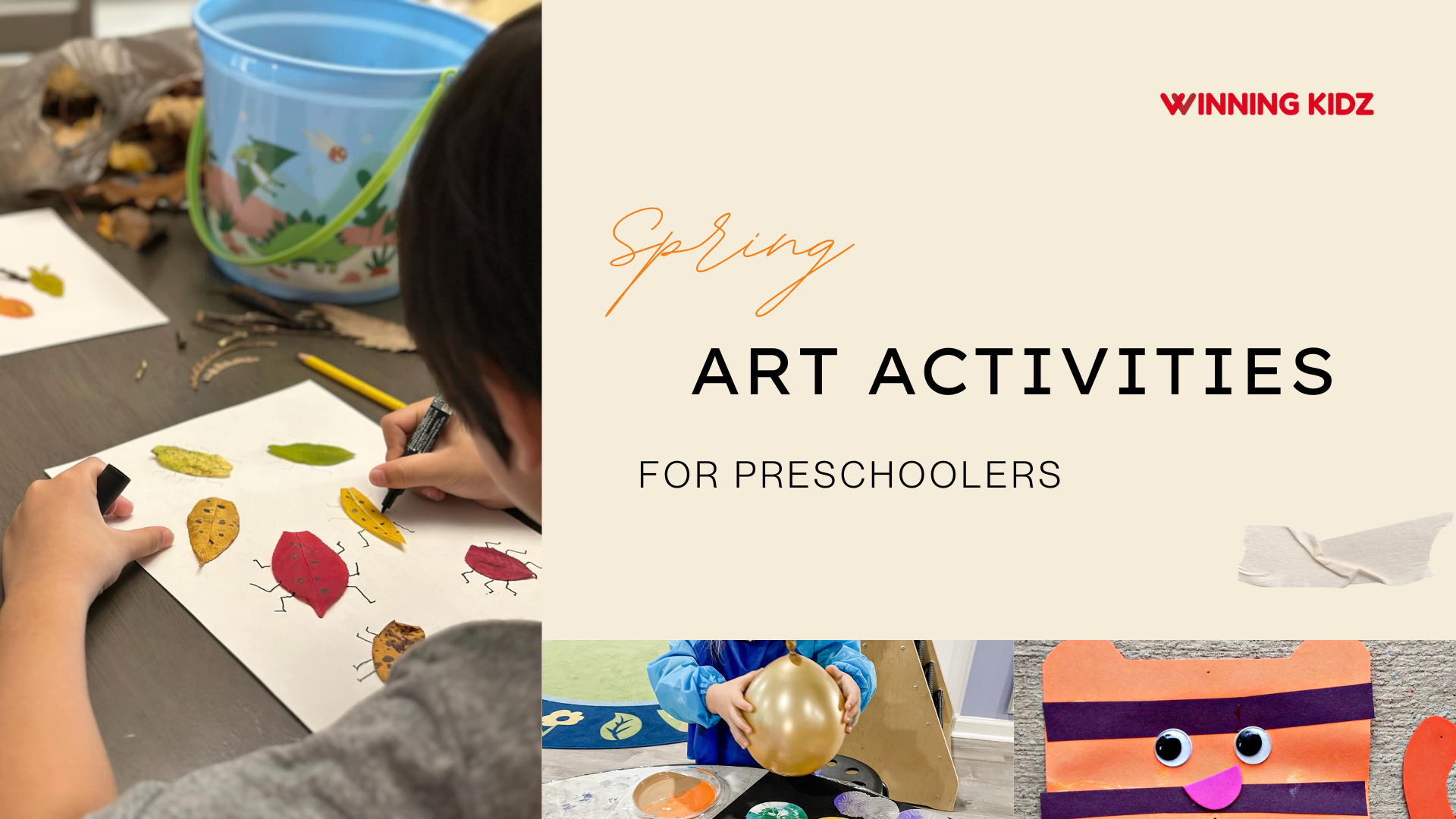Are you looking for meaningful spring art activities for preschoolers that go beyond simple crafts? Struggling to find creative projects that are developmentally appropriate, cost-effective, and easy to organize in a busy kindergarten setting? Concerned about balancing fun with educational value?
Spring art activities for preschoolers offer far more than seasonal decoration—they are vital tools for promoting fine motor development, color recognition, sensory exploration, and emotional expression. In a well-planned early childhood environment, these activities align with Montessori and Reggio-inspired principles by encouraging child-led creativity through hands-on experiences.
This guide includes 36 thoughtfully selected spring art activities for preschoolers—designed to inspire creativity, align with early learning goals, and work seamlessly in modern kindergarten classrooms.
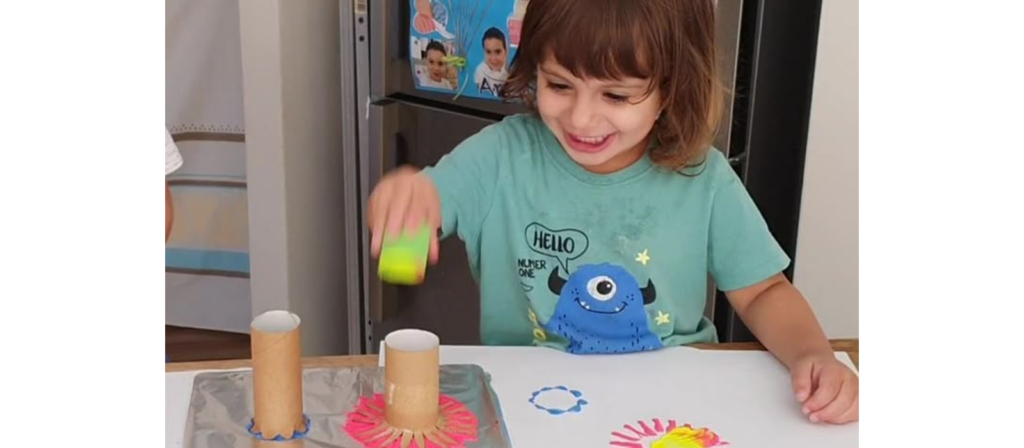
Benefits of Spring Art Activities for Preschoolers
In early childhood education, seasonal art isn’t just a way to pass the time—it’s a powerful tool for cognitive, emotional, and physical development. Spring, in particular, brings with it a natural sense of renewal and curiosity that children instinctively respond to. When educators and caregivers introduce spring art activities for preschoolers, they tap into this developmental window where sensory exploration and creative expression thrive.
At the core, spring art activities for preschoolers support multi-sensory learning and developmental balance. They help children express their ideas, refine motor skills, explore patterns, and connect with others. For preschool directors, educators, and school founders, incorporating spring art activities for preschoolers into the curriculum provides both practical structure and creative flexibility—two ingredients that lead to engaged, happy, and developmentally thriving students.
Supports Fine Motor Development
The repetitive, focused motions involved in many spring art activities for preschoolers—cutting flower shapes, gluing tissue paper, dabbing paint with cotton balls—help strengthen the small muscles of the hands and fingers. These movements are critical for building skills like pencil grip, scissor use, and independence in dressing. Each activity becomes a stepping stone toward more complex tasks, all while children are immersed in joyful, seasonal creativity.
Encourages Emotional Expression
Children often express what they feel long before they can put it into words. Spring art activities for preschoolers provide an ideal outlet for those emotions. A child might use blue swirls to show a rainy day mood, or bright yellows and pinks to express happiness during a flower-painting session. This type of emotional connection fosters self-awareness and builds self-esteem. Art becomes not just a task, but a mirror of the child’s world.
Enhances Cognitive Connections
Many spring art activities for preschoolers incorporate early STEM and logic skills in fun, indirect ways. For example, when creating symmetrical butterflies, children learn visual balance and reflection. Building a “plant growth” collage reinforces sequencing and biological understanding. Even simple pattern stamping with vegetable shapes can teach categorization, order, and cause-and-effect relationships. Through guided exploration, each project becomes a learning moment tied to real-world knowledge.
Strengthens Classroom Community
When children work together on seasonal murals or display their projects side-by-side, a sense of collective pride emerges. Spring art activities for preschoolers naturally encourage sharing, observing each other’s choices, and celebrating creativity. These shared art experiences help establish classroom identity and belonging, key elements of a nurturing learning environment. Teachers can use spring art time to encourage language use (“Tell me about your flower”) and peer interaction (“Look, mine has a bee too!”), building social-emotional learning through every brushstroke.
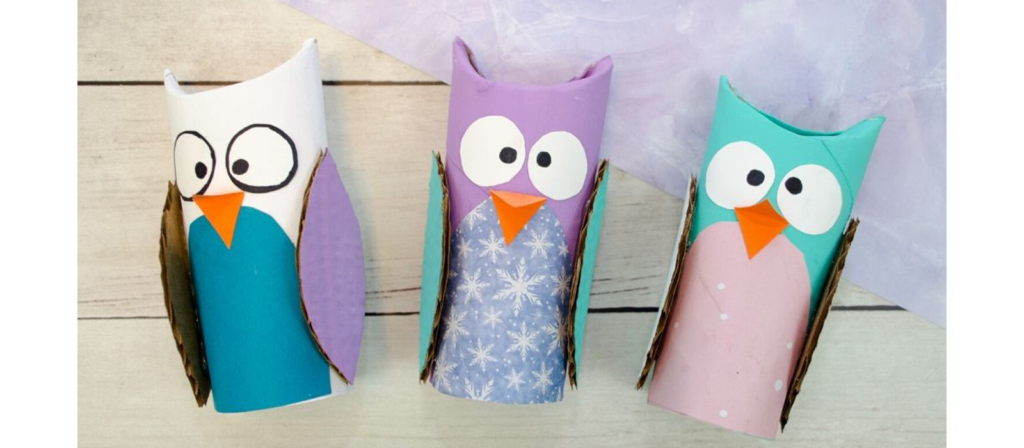
Spring Art Activities for Preschoolers
Spring is a time of color, energy, and inspiration, making it the perfect season for hands-on creativity in the classroom. These spring art activities for preschoolers are not only fun but also rich in developmental value. They support creative expression, motor skill building, and thematic learning in a way that feels fresh and exciting to young minds.
Whether you’re planning art time for a preschool, daycare, kindergarten, or after-school program, these easy spring art projects offer a mix of cute crafts, nature-themed designs, and process-based creativity that fit beautifully into daily lesson plans.
Nature-Inspired Spring Art Activities for Preschoolers
1. Nature Collage
Overview:
Nature collages are an open-ended spring art activity for preschoolers to observe, collect, and creatively use materials from the outdoors. It’s a perfect introduction to seasonal change and hands-on sensory exploration.
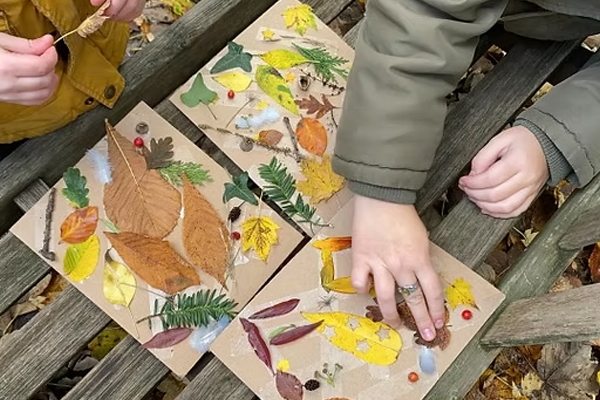
Materials:
Children will use items gathered during outdoor walks, such as leaves, flower petals, grass, small twigs, and even pebbles. At the art station, they’ll find paper, glue, and safety scissors for assembling their collages.
How to Do:
- Guide children on a nature walk and invite them to collect small items they find interesting.
- Back in the classroom, lay out their collected materials alongside blank sheets of paper.
- Show how to apply glue to the paper, then press each nature item into place.
- Encourage them to arrange their materials creatively—some may form pictures, others may explore patterns.
Educational Value:
- Enhances observation skills and awareness of seasonal elements
- Promotes fine motor development through gluing and placement
- Encourages creativity and personal expression using real-world materials
- Builds vocabulary as children name and describe what they collected
2. Leaf Prints
Overview:
A classic spring art activity for preschoolers, leaf printing teaches children about symmetry, texture, and pattern-making. It’s visually rewarding and helps children notice subtle details in leaves they’ve seen a hundred times before.
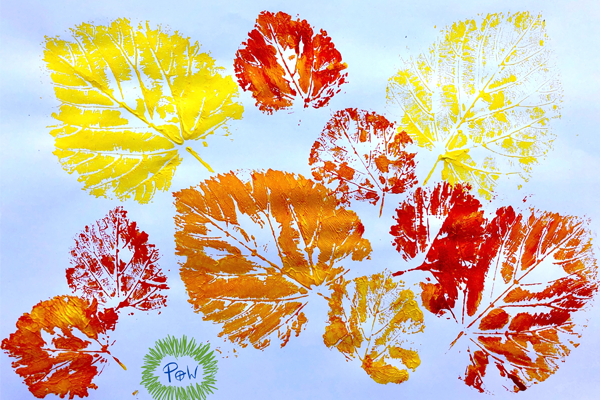
Materials:
Children will use real leaves, washable paint in spring colors, white or colored paper, and brushes. It’s helpful to have trays or plates for rolling or dabbing paint onto the leaves.
How to Do:
- Let each child choose a few different shapes and sizes of leaves.
- Help them paint one side of the leaf using a brush or sponge.
- Flip the painted side down onto the paper and press gently.
- Carefully lift the leaf to reveal the print.
Educational Value:
- Introduces symmetry and texture
- Strengthens hand coordination and pressure control
- Sparks an interest in nature and different plant types
- Offers a calming, repeatable process for focused attention
Innovation Point:
This is an excellent opportunity to connect art activities for preschoolers spring theme with science. You can display the leaf types, let children sort them, or even label them to extend the lesson into early literacy or botany.
3. Painted Rocks
Overview:
Painting rocks is a multisensory, durable art experience. Kids love it—and it’s versatile. These spring art activities for preschoolers can turn simple rocks into flowers, bugs, or storytelling characters. Best of all, they last and can be used for outdoor decoration or classroom games.
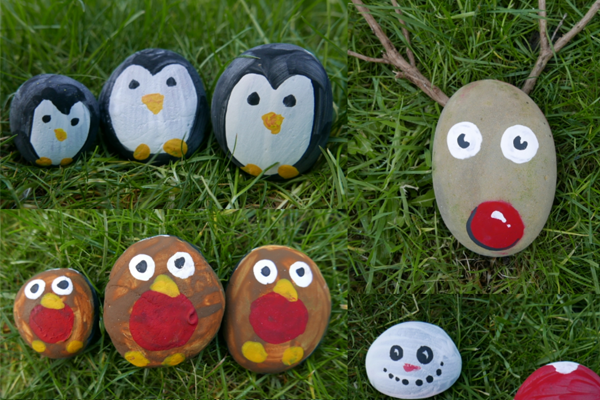
Materials:
Smooth, clean rocks are the base. Children will use acrylic or washable paints, paintbrushes of various sizes, water cups, and aprons to protect clothing. Optional materials include googly eyes, glitter glue, or markers for detail work.
How to Do:
- Let each child choose one or two rocks based on shape and feel.
- Encourage them to imagine what their rock could become—ladybug, bee, flower, face, etc.
- Have them paint a base layer first, then allow it to dry slightly.
- Add facial details, wings, spots, or patterns using fine brushes or markers.
Educational Value:
- Builds hand control and surface awareness on 3D shapes
- Encourages creative thinking and design planning
- Introduces permanence—children are painting on a lasting object
- Strengthens expressive language as they describe their creations
Innovation Point:
Children can hide their painted rocks around the schoolyard or garden as part of a spring-themed art project scavenger hunt. This turns art into an interactive game that adds joy to outdoor learning.
4. Twig Weaving Boards
Overview:
Twig weaving is a tactile and visually engaging spring art activity for preschoolers that introduces early weaving concepts using natural materials. Children build their own “mini looms” using twigs and yarn, turning nature into a creative learning tool. Among all the spring art activities for preschoolers, this one bridges outdoor exploration with quiet, focused crafting—ideal for both group settings and one-on-one teaching.
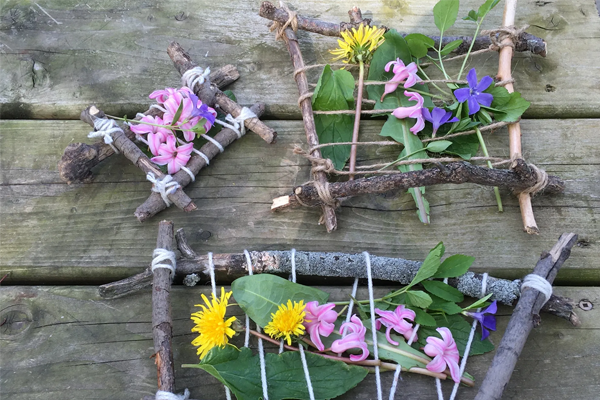
Materials:
Children will collect small, straight twigs during outdoor play or nature walks. Back inside, they’ll use yarn, ribbon, or colored string to wrap around their twig boards. Cardboard bases and glue help stabilize the structure.
How to Do:
- Help children choose or build a frame using 2–4 twigs secured onto cardboard.
- Demonstrate how to tie the yarn to one side and weave it over and under the twigs.
- Allow them to alternate yarn colors, add beads, or include bits of fabric for texture.
- Display the finished twig boards on a spring-themed classroom wall.
Educational Value:
- Introduces early concepts of weaving and repetition
- Supports bilateral coordination and hand strength
- Builds patience and sequence-following
- Encourages pattern recognition and planning
Innovation Point:
Combining natural materials with process art, this activity bridges outdoor exploration with fine motor development—perfect for creative arts and crafts for preschoolers with a hands-on learning style.
Colorful Painting Spring Art Activities for Preschoolers
5. Rainy Day Watercolor
Overview:
This calming watercolor painting is a gentle introduction to color blending and mood-based art. Perfect for those drizzly spring mornings, it’s one of the easiest and most reflective April art projects for preschoolers.
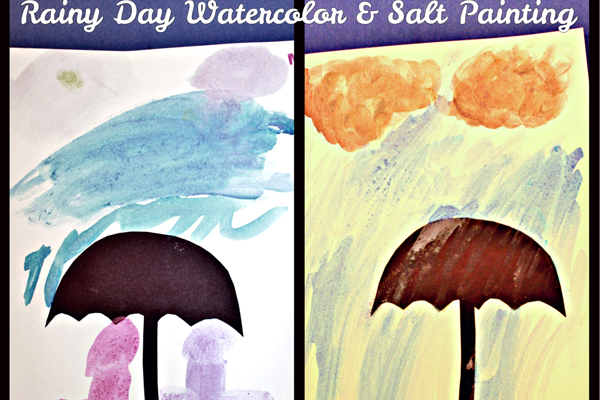
Materials:
Children use watercolor paints in shades of blue, gray, and purple, along with paintbrushes, water cups, and absorbent paper. A bit of coarse salt adds a fun, sensory texture that mimics raindrops on paper.
How to Do:
- Invite children to wet their paper slightly with a brush.
- Let them apply cool-toned watercolor paint in soft strokes or swirls.
- While the paint is still wet, sprinkle salt across the surface to create a speckled effect.
- Allow the painting to dry, then brush off the salt to reveal “raindrop” textures.
Educational Value:
- Introduces texture and reaction-based painting
- Develops hand control and brush technique
- Teaches emotional expression through color and movement
- Encourages quiet, focused engagement
Innovation Point:
By combining open-ended art for preschool with a simple science-based reaction, this project adds a layer of discovery, perfect for integrating into springtime preschool activities or themed discussions about weather.
6. Rainbow Dot Painting
Overview:
Rainbow dot painting is one of the most joyful kindergarten spring art activities. With dot markers or Q-tips, children explore color order, patterning, and symmetry. It’s simple, satisfying, and perfect for fine motor practice during spring art activities for preschoolers.
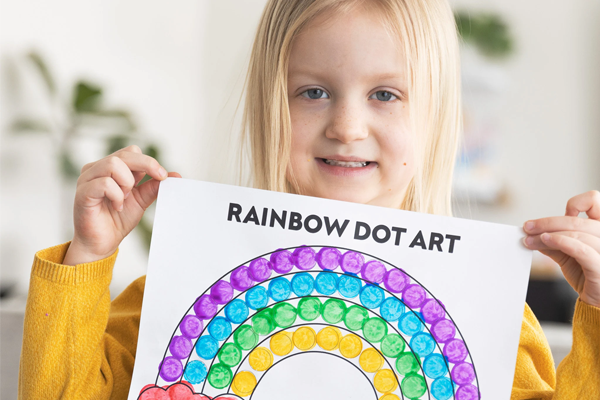
Materials:
This activity uses dot markers or cotton swabs, washable paint in rainbow colors, and white paper. A simple rainbow arc can be pre-drawn for guidance, or left open-ended for full creativity.
How to Do:
- Invite children to dot-paint across the page in rainbow order: red, orange, yellow, green, blue, purple.
- They can follow the arc of a rainbow or fill in spaces with colorful patterns.
- Allow the paint to dry, then display it in the classroom as part of a spring-themed gallery.
Educational Value:
- Reinforces color order and sequence
- Builds concentration and small-muscle precision
- Supports patterning, which connects to early math skills
- Provides an energetic, accessible option for all learning styles
Innovation Point:
This is one of the few easy spring art ideas that doubles as a calming sensory activity. It’s also highly adaptable for different age groups—great for art activities with preschoolers, toddlers, and even older afterschoolers.
7. Spring Sky Sponge Painting
Overview:
Among all spring art activities for preschoolers, sponge painting stands out for its simplicity and calming rhythm. This sky-themed project lets children recreate what they see above—clouds, blue skies, maybe even birds—using layers of soft paint texture. It’s perfect for a gentle morning session or for bringing weather themes into the art corner.
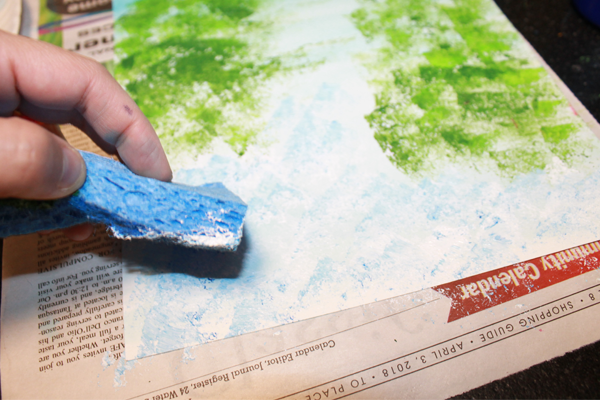
Materials:
Children will use small pieces of sponge, blue and white washable paint, trays for dabbing, and thick paper to absorb the layered texture of paint. Optional additions include sun cutouts or paper birds to complete the scene.
How to Do:
- Pour blue and white paint onto trays and give each child a sponge piece.
- Invite them to dab blue across the paper in cloud-like motions.
- Then show how to layer white on top to create the fluffy clouds of spring skies.
- Add details like sun rays or birds once dry.
Educational Value:
- Introduces soft texture layering and visual blending
- Teaches observation-based drawing (sky, clouds, atmosphere)
- Develops hand strength and spatial control
- Encourages children to reflect on their environment
Innovation Point:
This is one of the best open-ended spring art activities for preschoolers because it connects art to daily weather discussions. It also builds soft motor control while giving each child a chance to interpret their version of the sky.
8. Egg Carton Caterpillars
Overview:
This classic spring craft for kindergartners never fails to entertain. Using recycled materials, children build colorful caterpillars and learn about bugs, life cycles, and creative character-building. It’s a hands-on favorite in any spring-themed classroom setup.
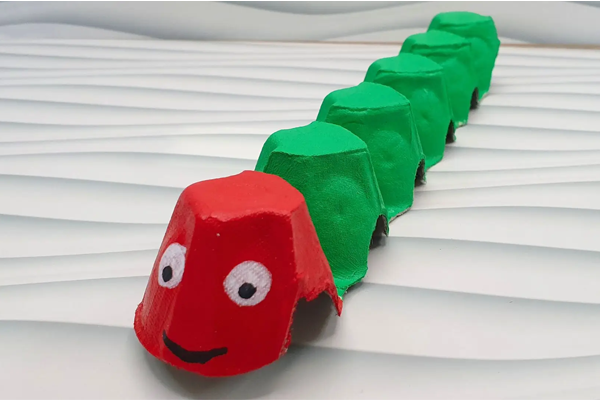
Materials:
You’ll need egg cartons (cut into strips), green and other colored paints, googly eyes, glue, and pipe cleaners for antennae. Children may also decorate with glitter glue or pom-poms if desired.
How to Do:
- Cut the egg cartons into 3–5 cup strips for each child.
- Have them paint their caterpillars using spring tones like green, pink, or yellow.
- Once dry, add eyes, draw a mouth, and poke pipe cleaner antennas into the front.
- Let them name their caterpillars and share a “story” about them.
Educational Value:
- Enhances tactile creativity and color planning
- Introduces insect anatomy in a fun and memorable way
- Supports fine motor precision during painting and gluing
- Encourages imaginative thinking through character building
Innovation Point:
As one of the most beloved spring art projects for preschoolers, this combines creativity and science. Add a life cycle chart nearby to show how caterpillars become butterflies, extending the art into natural science learning.
Bug & Animal Themes Spring Art Activities for Preschoolers
9. Paper Plate Ladybugs
Overview:
This insect craft brings bright red ladybugs to life using simple materials. It’s a visual favorite during springtime and perfect for teaching symmetry, counting spots, and using basic shapes to build real-world objects.
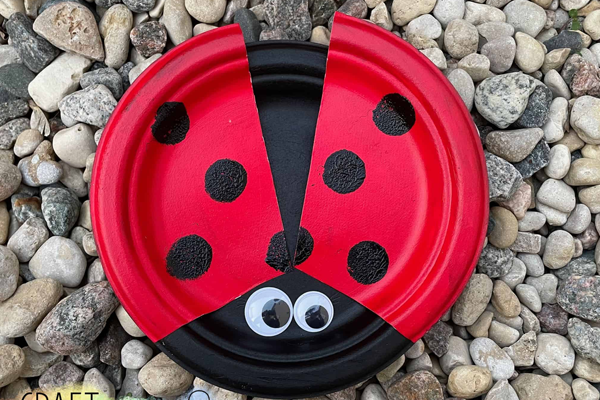
Materials:
Children will use paper plates, red and black paint, pre-cut black construction paper dots, glue, and optional googly eyes. A brush or sponge is used for the base coat.
How to Do:
- Have children paint their paper plates red and let them dry.
- Add black dots either with glue or paint, focusing on symmetry.
- Glue on eyes and use black paper or pipe cleaners for antennae.
- Hang them on a spring bulletin board or make a “bug parade” line.
Educational Value:
- Reinforces color identification and symmetry
- Helps children recognize insects as part of seasonal change
- Introduces early counting (dots on the ladybug’s back)
- Encourages organized thinking in visual composition
Innovation Point:
This doubles as a number art project for preschoolers when you let kids decide how many dots to place and match the count with a number card—great integration of math into fun spring preschool art.
10. Footprint Bunnies
Overview:
Footprint bunnies are a charming, tactile, and giggle-inducing spring craft for preschool classrooms. This activity turns little feet into the primary art tool—creating a personal keepsake while exploring symmetry, shape, and storytelling.
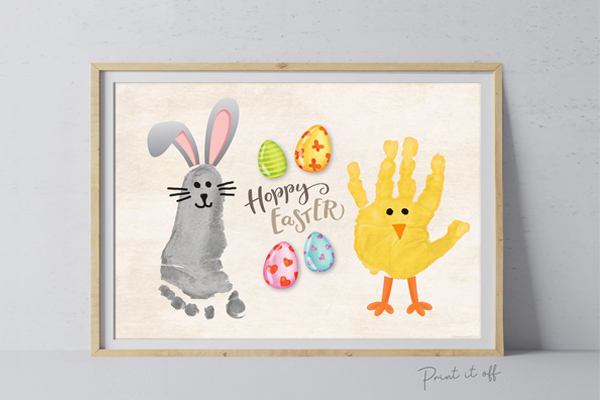
Materials:
Children use washable white paint, large sheets of pastel-colored paper, cotton balls, black and pink markers, and glue. Each child will need space to press one painted foot onto the paper safely.
How to Do:
- Help each child paint the bottom of one foot with white paint.
- Gently press it onto the paper, toes up, to form the bunny’s body and ears.
- Once dry, add a pink nose, eyes, and whiskers using markers.
- Glue a cotton ball to the heel as the fluffy tail.
Educational Value:
- Boosts sensory awareness and body part recognition
- Supports gross-to-fine motor coordination
- Enhances creativity through personalization
- Builds confidence with a successful, cute result every time
Innovation Point:
It’s not just cute—this project becomes a personalized April art activity when children write their names or messages next to their bunny prints, making it perfect for spring family displays or Mother’s Day projects.
11. Pom-Pom Chicks
Overview:
Pom-pom chicks are one of the most straightforward and most lovable cute crafts for spring. These cheerful yellow fluff balls are ideal for preschool springtime crafts focused on fine motor skills and seasonal themes like baby animals and growth.

Materials:
Children will use yellow pom-poms (large and small), small orange triangles for beaks, googly eyes, and glue. Optional extras include feathers, mini baskets, or fake grass for a mini “nest.”
How to Do:
- Help each child glue a small pom-pom (head) onto a larger one (body).
- Attach eyes and a beak to the top pom-pom.
- Add feathers or place the chick in a small paper “nest” made from shredded paper.
- Encourage them to name and “talk” about their chick.
Educational Value:
- Develops hand-eye coordination through small gluing tasks
- Introduces animal vocabulary and springtime birth themes
- Encourages imaginative storytelling and personification
- Builds spatial awareness when combining 3D components
Innovation Point:
This is more than a cute spring art idea—it’s a multisensory experience. Kids love the softness of the materials, and pairing this with a spring-themed book brings language arts into your spring art activities for preschoolers curriculum naturally.
Flower Spring Art Activities for Preschoolers
12. Tissue Paper Flowers
Overview:
Tissue paper flowers are a timeless favorite in spring art activities for preschoolers, known for their bright colors and 3D impact. Children love crumpling and shaping, and teachers love how they beautify classroom walls.

Materials:
Each child needs colorful tissue paper squares, green pipe cleaners or straws (for stems), child-safe scissors, and glue. Optional buttons or beads can serve as flower centers.
How to Do:
- Let children choose 4–6 tissue paper squares in different colors.
- Stack them, fold accordion-style, and tie the middle with a pipe cleaner.
- Fluff and separate the paper layers to form petals.
- Optionally, glue a bead or button in the center.
Educational Value:
- Strengthens fine motor control through folding and fluffing
- Introduces 3D composition and layering
- Supports color exploration and pattern arrangement
- Boosts attention span through a multi-step process
Innovation Point:
Turn this into a spring preschool art project with a purpose: children can each make a flower and collectively “plant” them on a large bulletin board or window mural, creating a collaborative classroom garden.
13. Handprint Tulips
Overview:
Handprint tulips bring a personal touch to spring art activities for preschoolers by turning a child’s hand into the petals of a flower. They’re great for portfolio projects, spring gifts, or seasonal bulletin boards.
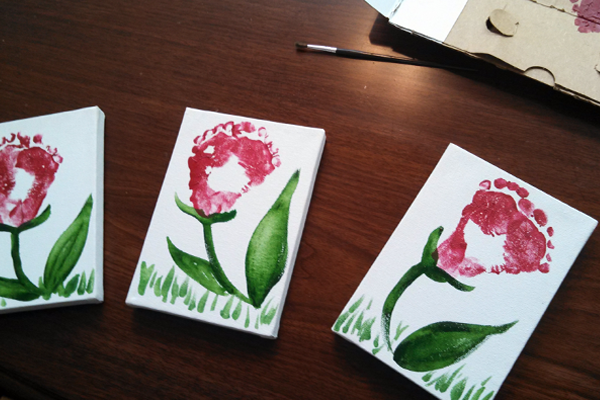
Materials:
Children use washable paint in various tulip colors (red, pink, yellow, purple), green paint for stems, large sheets of paper, and brushes or sponge rollers. Wet wipes or a wash station nearby helps keep things tidy.
How to Do:
- Paint the palm and fingers of one hand with a tulip color and press onto paper.
- Repeat two or three times to make a bouquet.
- Use a brush to paint green stems from the handprints to the bottom of the paper.
- Allow to dry, and optionally write the child’s name or a spring greeting.
Educational Value:
- Builds awareness of shape and negative space
- Strengthens motor planning and pressure control
- Encourages color recognition and sequencing
- Provides a personal touch through physical imprint
Innovation Point:
This is a simple springtime drawing idea that creates a lasting keepsake using children’s actual handprints, adding a meaningful dimension to what would otherwise be a standard flower craft.
14. Cupcake Liner Flowers
Overview:
Cupcake liner flowers are a fast, low-mess, and versatile spring craft project for preschoolers. They’re ideal for mixed-age classrooms because they can be as simple or as detailed as needed.
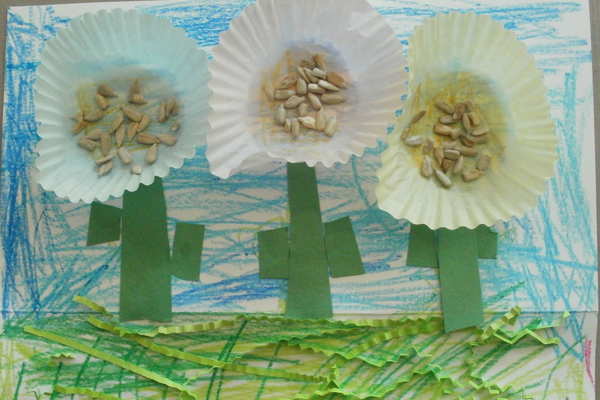
Materials:
Children will use colored cupcake liners, glue sticks, construction paper, green pipe cleaners, and decorative accents like buttons or pom-poms. Pre-cut leaves or optional stickers can be used for embellishment.
How to Do:
- Flatten one or more cupcake liners and glue them onto paper as flower heads.
- Stack smaller liners inside for layered petals.
- Attach green pipe cleaners or draw stems and leaves.
- Decorate the flower center with buttons or markers.
Educational Value:
- Teaches spatial layering and arrangement
- Strengthens hand-eye coordination and gluing skills
- Supports creative decision-making with colors and textures
- Encourages shape recognition through circular elements
Innovation Point:
As part of a creative artwork for preschoolers collection, these liners can be repurposed in different ways—such as butterflies or suns—making this an open-ended project with endless variations.
15. Paper Strip Daffodils
Overview:
Paper strip daffodils bring a sculptural quality to classroom art and are an excellent spring art project for kindergarten or older preschoolers. They combine early math skills with bright seasonal visuals.

Materials:
Children use strips of yellow and orange construction paper, glue, scissors, a circular center piece, and green paper for stems. This activity works best with pre-cut strips to save time and avoid frustration.
How to Do:
- Provide 6–8 yellow strips and 3–4 orange strips to each child.
- Loop and glue the ends of each strip to create petal shapes.
- Arrange the loops around a circular center and glue them into place.
- Add a stem and leaves made from green paper.
Educational Value:
- Strengthens sequencing and spatial logic
- Builds scissors and gluing skills in a structured format
- Reinforces math vocabulary like “loop,” “center,” and “symmetry.”
- Introduces 3D form-building with paper
Innovation Point:
This project adds a tactile dimension to spring art activities for kindergarten, giving students the experience of building shape in layers. Try displaying them upright on classroom walls for an immersive 3D garden.
Weather and Sky Spring Art Activities for Preschoolers
16. Cotton Ball Clouds
Overview:
Cotton ball clouds are a classic yet practical spring art preschool project that helps children observe and recreate sky patterns. This sensory-rich craft is perfect for weather units or simple visual storytelling about spring skies.
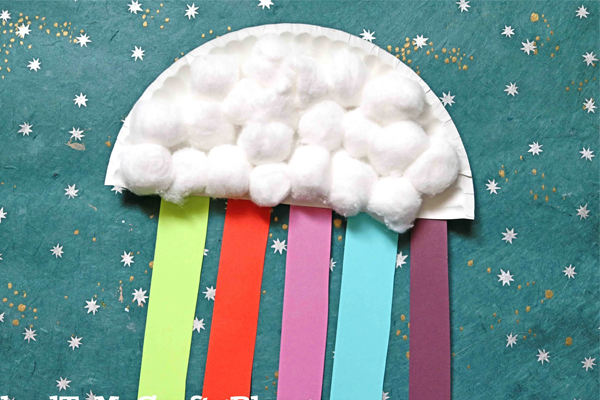
Materials:
Children use cotton balls, blue construction paper, white glue, and optional light blue or gray crayons for background shading. A small amount of glitter glue or paper raindrops can add seasonal flair.
How to Do:
- Give each child a sheet of blue paper as the sky base.
- Invite them to pull and stretch cotton balls to form fluffy cloud shapes.
- Glue the cotton balls onto the paper in various arrangements.
- Add raindrops or sun rays with crayons or stickers if desired.
Educational Value:
- Builds fine motor strength through tearing and shaping
- Encourages texture exploration and spatial awareness
- Introduces weather vocabulary like “cloudy,” “stormy,” or “overcast.”
- Supports observation-based creativity
Innovation Point:
Perfect for cloud art activities for preschoolers, this project becomes interactive when you ask children to describe the “type” of sky they’ve created, turning art into a mini language arts activity.
17. Umbrella Painting
Overview:
This is one of the most expressive and fun spring art activities for rainy days. Children paint their umbrellas and create a stormy or rainbow-filled background, using personal experience and weather imagination as inspiration.
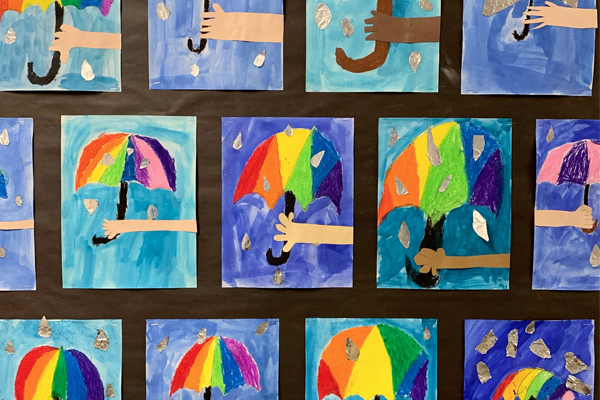
Materials:
Children receive umbrella templates or pre-cut umbrella shapes, paint them in various colors, brushes, and markers. For the background, a large paper or poster board is used to support both the umbrella and the surrounding environment.
How to Do:
- Ask each child to decorate their umbrella cutout with paint or patterns.
- Glue the umbrella onto a larger sheet of paper.
- Around the umbrella, paint raindrops, rainbows, clouds, or even lightning bolts.
- Add people, pets, or puddles to expand the scene.
Educational Value:
- Develops storytelling and expressive art skills
- Strengthens brush control and layering techniques
- Builds weather awareness and emotional expression
- Encourages decision-making through open-ended scenarios
Innovation Point:
As a spring-themed art activity for preschoolers, this is highly adaptable—children who want to paint sunshine can do so, while others dive into stormy skies. It’s one project with infinite interpretations.
18. Kite College
Overview:
Kite collages are a bright, motion-inspired spring art activity for kindergarten and preschool students alike. This craft invites kids to assemble, decorate, and “fly” their kites through creative paper work and embellishment.
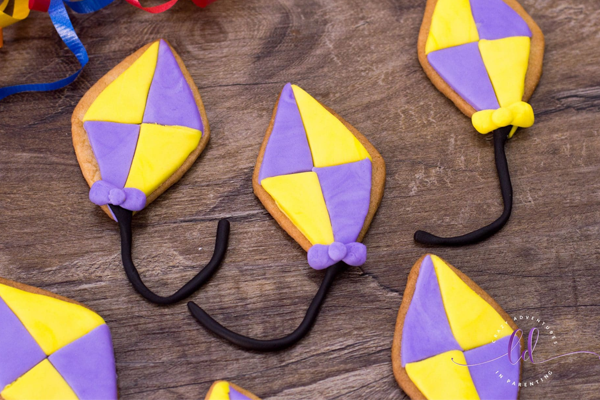
Materials:
Children use pre-cut diamond shapes for kites, colored paper strips or ribbon for tails, glue, markers, and a sheet of sky-blue paper as a background canvas. Optional stickers or stamps add a personal touch.
How to Do:
- Let children decorate their kite shape using markers, patterns, and stickers.
- Glue the kite onto the blue background.
- Attach a long tail made of ribbon or paper strips with “bows” tied along the line.
- Add details like clouds, birds, or the sun to complete the spring sky.
Educational Value:
- Supports shape recognition and directional layout (diagonal, top, tail)
- Reinforces fine motor skills through gluing and line creation
- Encourages theme-based storytelling (“Where is my kite flying?”)
- Promotes focus through multi-part assembly
Innovation Point:
Turn it into a class display called “Kites of Kindness,” where each child writes a positive message on their kite tail, adding a social-emotional layer to a springtime art project for preschoolers.
19. Windy Day Streamers
Overview:
Windy Day Streamers are a high-energy, movement-based spring activity for preschoolers art sessions. These colorful crafts combine creativity with physical activity, making them perfect for classrooms with active learners.
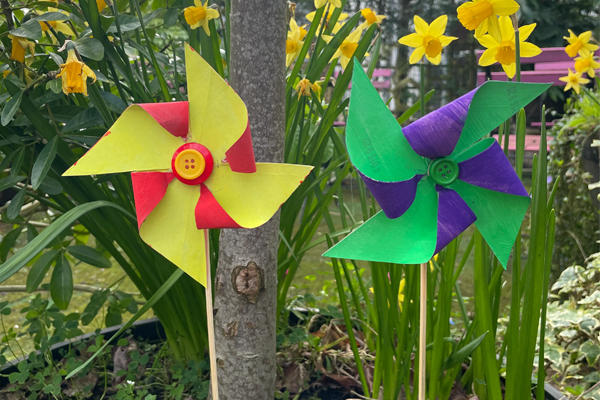
Materials:
Children use cardboard tubes (from paper towels), strips of tissue paper or ribbon, glue or tape, and crayons or markers for decorating. Optional extras include stickers or cut-out spring icons like flowers or butterflies.
How to Do:
- Have children color or decorate their cardboard tube base with markers.
- Tape or glue 5–7 strips of tissue paper to one end of the tube, hanging down like streamers.
- Optionally, add stickers or write names on each tube.
- Let children run outside with their streamers to see how they dance in the wind.
Educational Value:
- Encourages gross motor coordination and cause-and-effect understanding
- Builds a connection between seasonal weather (wind) and motion
- Enhances creativity through decoration and ownership
- Supports sensory input and outdoor learning
Innovation Point:
Combining art projects for fun with outdoor movement, this activity turns art into physical play, ideal for kids who benefit from dynamic, kinesthetic expression.
Garden & Growth Spring Art Activities for Preschoolers
20. Vegetable Stamps
Overview:
Vegetable stamping is one of the most surprising and textural spring art ideas preschool teachers love. It introduces pattern-making, observation, and natural materials while reinforcing basic printmaking skills.

Materials:
Children use cut vegetables (celery stalks, potatoes, okra, or mushrooms), trays of paint, and white or pastel paper. Celery hearts look like roses, while cut potatoes can be carved into shapes.
How to Do:
- Cut vegetables in half or into desired shapes before the activity.
- Dip the cut surface in paint and gently stamp it onto the paper.
- Let children experiment with patterns, overlapping shapes, and color mixing.
- Optionally, label the vegetable or create a “garden” of stamped prints.
Educational Value:
- Introduces early printmaking techniques
- Reinforces observation of shapes and textures
- Encourages experimentation with spacing and repetition
- Connects food, nature, and art for interdisciplinary learning
Innovation Point:
This makes a great art activity for afterschoolers or mixed-age groups—adults and older siblings can help carve simple shapes, creating a collaborative, family-friendly craft opportunity.
21. Seed Mosaic
Overview:
Seed mosaics are a sensory-rich and visually intricate preschool spring art activity that blends creativity with early math. Children use various seeds to build colorful, textured artwork while exploring size, pattern, and natural materials.
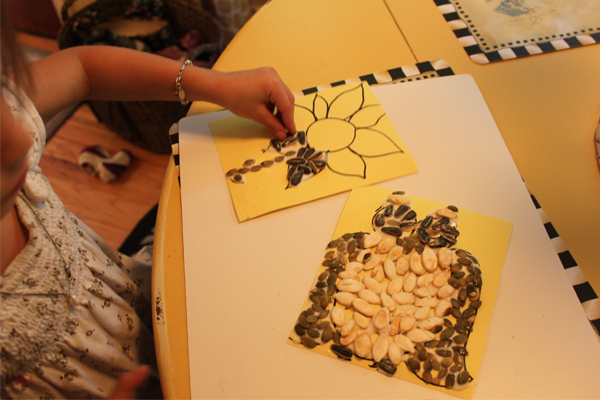
Materials:
Children use dried seeds like lentils, beans, corn kernels, sunflower seeds, and glue on thick cardboard or cardstock. A pencil helps draw a simple shape to fill in with seeds.
How to Do:
- Lightly sketch a shape (butterfly, flower, sun) on cardstock.
- Apply glue to one section at a time and press in different types of seeds.
- Use contrasting colors to fill different areas.
- Let dry and display flat to avoid pieces falling off.
Educational Value:
- Builds sorting, patterning, and shape recognition
- Strengthens precision and fine motor control
- Encourages focus and attention to detail
- Introduces sensory differences in texture and size
Innovation Point:
With a bit of prep, this becomes a number art activity by having children glue a specific number of seeds into each section, linking art with counting in a tactile, creative way.
22. Paper Plate Garden
Overview:
The Paper Plate Garden is a vibrant, story-based spring craft for preschool children that transforms a standard item—paper plates—into a cheerful garden scene. It’s a great way to teach about planting, growth, and the parts of plants through art.
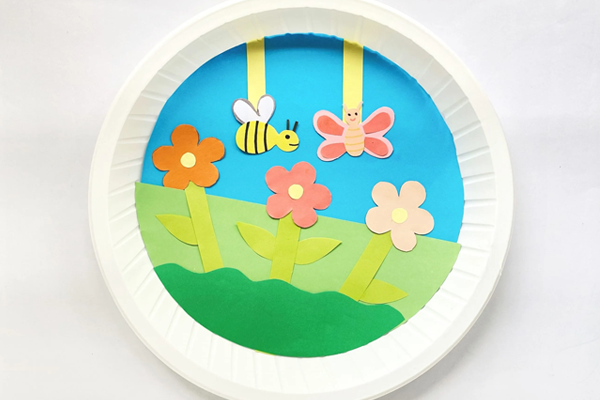
Materials:
Each child uses a paper plate as the base. Brown paint (or paper) represents soil, while cutouts of flowers, vegetables, and roots are glued on top. Additional materials may include pipe cleaners (stems), tissue paper (flowers), and markers for labeling.
How to Do:
- Have children paint the bottom half of the plate brown to represent the soil.
- Add flower tops, stems, and leaves above the “ground” using paper or craft materials.
- Below the paint line, glue root shapes or carrot/beet cutouts with strings for roots.
- Label plant parts or add bugs/worms for extra detail.
Educational Value:
- Introduces early science concepts: parts of a plant, garden ecosystems
- Develops sequencing and spatial layout skills
- Strengthens storytelling abilities through visual composition
- Enhances vocabulary with plant-related terms
Innovation Point:
This is one of the best preschool spring art lessons that mixes imaginative storytelling with plant science, making it ideal for integrating into both art and nature curriculum blocks.
23. Sunflower Growth Chart
Overview:
The Sunflower Growth Chart is a collaborative, evolving classroom display that tracks student height over the season, wrapped in a beautifully illustrated flower theme. It’s a standout spring art activity for kindergarten that also incorporates measurement and numeracy.
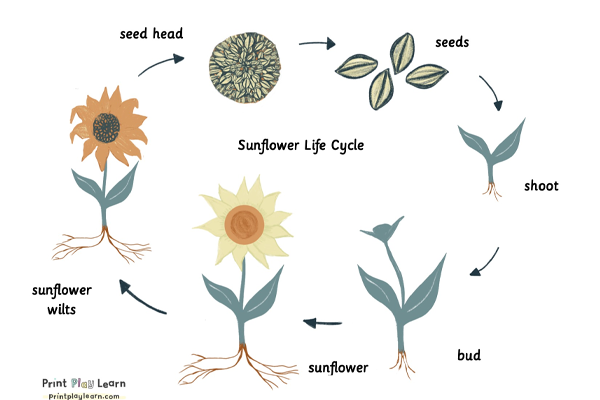
Materials:
Teachers use butcher paper or a long vertical poster as the “sunflower stalk.” Children create petals, leaves, and flower centers from colored construction paper, and the class collectively assembles the sunflower as students grow.
How to Do:
- Measure each child and mark their height along the sunflower stem.
- Each child creates and decorates a petal with their name to add to the sunflower.
- Re-measure monthly or weekly, adding new leaves or petals to track growth.
- Use math language and visuals to compare heights or progress over time.
Educational Value:
- Reinforces measurement and height concepts
- Builds community through shared participation
- Encourages ownership and pride in growth
- Combines math, art, and identity-building
Innovation Point:
This turns a preschool building art project into an interactive growth tracker—both symbolic and literal—making it one of the most meaningful spring art ideas for preschoolers across multiple developmental areas.
Integrated Learning Spring Art Activities for Preschoolers
24. Spring Story Drawing
Overview:
Spring Story Drawing is a narrative-based art activity with preschoolers that supports both language and creative expression. After reading a spring-themed book, children illustrate their favorite scene or character.
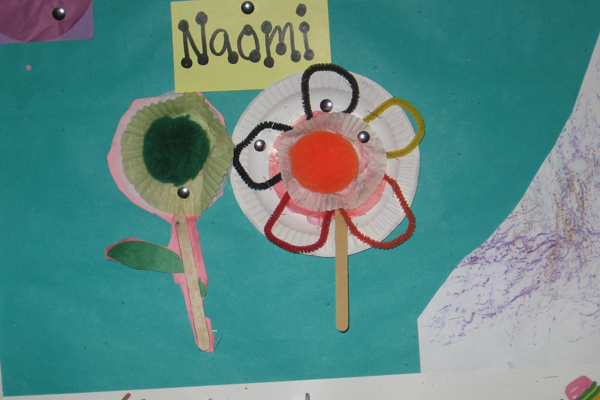
Materials:
Children use crayons, markers, or watercolors on drawing paper. The activity pairs with seasonal books like The Tiny Seed, And Then It’s Spring, or Muncha! Muncha! Muncha! for thematic consistency.
How to Do:
- Read a spring-themed story aloud to the group.
- Ask each child to recall a favorite part or character from the story.
- Invite them to draw that scene using any available art tools.
- Allow time for each child to explain or “present” their drawing to peers.
Educational Value:
- Supports memory, comprehension, and sequencing
- Bridges storytelling with visual representation
- Builds early public speaking skills
- Encourages listening and imaginative interpretation
Innovation Point:
As a hybrid language arts idea for preschool, this activity seamlessly blends reading and creativity, ideal for programs looking to integrate literacy into their springtime art curriculum.
25. Flower Petal Counting
Overview:
Flower Petal Counting combines math and creativity in one fun and structured number art project for preschoolers. Children make flowers with a specific number of petals based on a prompt, supporting one-to-one correspondence and early counting.
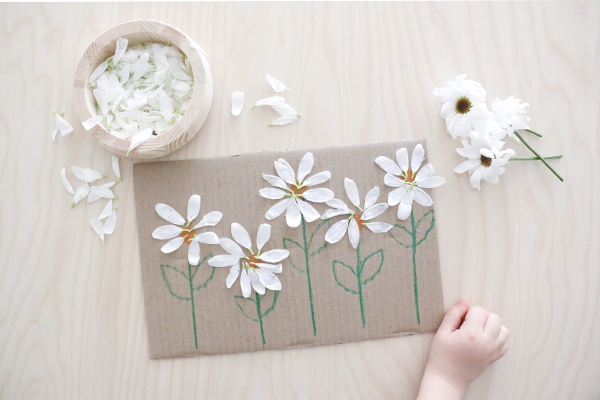
Materials:
Children use pre-cut circles for flower centers, paper petals, glue, and markers. Teachers prepare number cards or use dice to assign petal counts.
How to Do:
- Give each child a number (e.g., 5, 7, or 10).
- Have them glue that number of petals around a center circle.
- Write the number in the middle and optionally label the petal colors.
- Display the number of flowers in a “Spring Math Garden” bulletin board.
Educational Value:
- Reinforces number recognition and quantity matching
- Encourages math-based decision-making through hands-on visuals
- Supports fine motor precision through gluing
- Links math to real-world themes like flowers and gardens
Innovation Point:
This activity turns a spring art idea for preschoolers into a math-integrated experience. It’s ideal for classrooms seeking more purposeful art time tied to early academic standards.
26. Lifecycle of a Plant Craft
Overview:
The Lifecycle of a Plant Craft is a sequential, science-based spring art project for preschoolers that teaches children how a plant grows from seed to bloom. It’s perfect for connecting seasonal learning to visual storytelling.
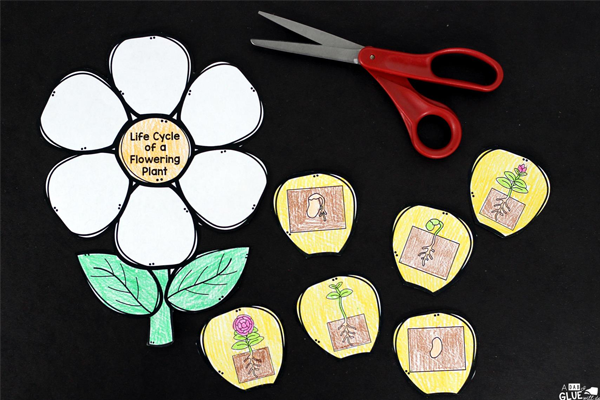
Materials:
Children use four small cards or sections of paper, each representing a plant stage: seed, sprout, plant, and flower. Glue, crayons, real seeds, cotton balls, and labels bring the cycle to life.
How to Do:
- Have children draw or build each stage of the plant’s growth.
- Use real materials like beans or sunflower seeds for the first stage.
- Glue cotton or yarn for roots, and draw sprouts or flowers.
- Sequence and glue all four stages in order on a chart or folder.
Educational Value:
- Teaches sequencing, time-based change, and introductory botany
- Builds early science vocabulary and observation
- Strengthens logical thinking and project organization
- Develops storytelling through visuals
Innovation Point:
This is a multi-day, cross-curricular springtime art project for preschoolers that combines art, nature, and science. Add written captions to create mini science journals.
Process & Sensory-Based Spring Art Activities for Preschoolers
27. Shaving Cream Marbling
Overview:
Shaving Cream Marbling is a crowd favorite for easy spring art projects. It introduces sensory play and beautiful swirling patterns, making it one of the most mesmerizing process art activities for preschoolers in spring.

Materials:
Children use shaving cream, droppers with food coloring or liquid watercolor, sturdy paper, and sticks or combs for swirling. A spatula or ruler helps scrape off excess foam.
How to Do:
- Spread shaving cream into a tray and smooth the surface.
- Drop color onto the cream and swirl lightly with a stick.
- Press paper on top, then lift and scrape off the excess cream.
- Let dry and admire the marbled design.
Educational Value:
- Encourages fine motor coordination and color exploration
- Teaches cause-and-effect through physical mixing
- Promotes sensory regulation and focus
- Builds confidence with abstract, successful outcomes
Innovation Point:
This is an actual open-ended art activity for preschool. No two pieces look alike, and the process invites calm concentration—ideal for balancing high-energy spring days.
28. Bubble Wrap Printing
Overview:
Bubble Wrap Printing is a low-prep, high-reward spring art activity for toddlers and preschoolers. It provides instant texture, promotes printing techniques, and turns everyday materials into fun stamps.
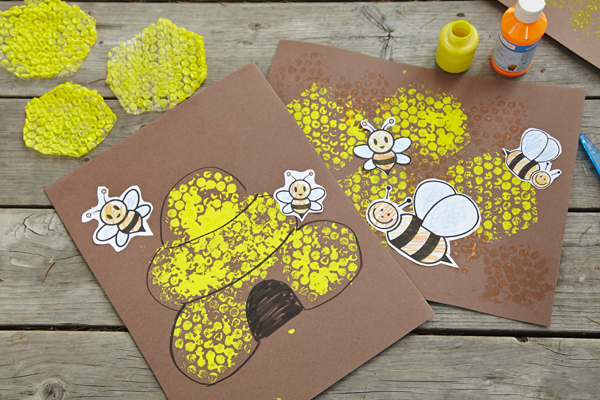
Materials:
Children use squares of bubble wrap, paint in spring colors, brushes or sponges, and thick paper. For extra creativity, shaped bubble wrap (cut into butterflies or clouds) adds a seasonal twist.
How to Do:
- Paint the bubble side of the wrap in any color.
- Flip and press it onto paper to make a dotted print.
- Repeat with other colors or overlaid patterns.
- Optionally, cut the prints into spring shapes after drying.
Educational Value:
- Introduces texture, pattern, and repetition
- Builds hand strength and pressure awareness
- Promotes discovery and experimentation
- Offers immediate visual success
Innovation Point:
As part of spring-themed art activities for preschoolers, this one is great for large group murals or collaborative backgrounds for bulletin boards.
29. Yarn Rolling Art
Overview:
Yarn Rolling Art brings movement and mess-friendly fun into the art corner. It’s a wonderful toddler open-ended art experience where a string dipped in paint creates sweeping, uncontrolled lines—perfect for artistic exploration.
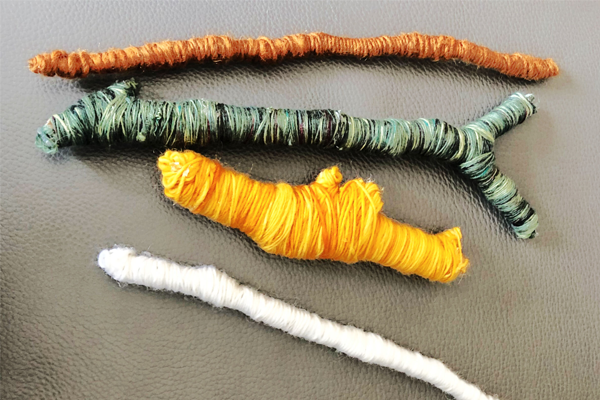
Materials:
Children use short pieces of yarn, washable paint in spring colors, trays or paper plates, and cardstock. Large boxes or trays contain the mess during rolling.
How to Do:
- Dip a piece of yarn into paint and let the excess drip off.
- Drop it onto paper and roll or drag it around.
- Try different yarn thicknesses for variety.
- Let dry and display as abstract “spring movement” art.
Educational Value:
- Enhances grip, tracking, and directional movement
- Encourages creativity with motion and randomness
- Develops abstract visual understanding
- Builds awareness of texture and weight
Innovation Point:
This spring preschool art project is ideal for expressive learners. Pair with music to let children roll yarn to rhythm—combining art with sound.
30. Nature Texture Rubbing
Overview:
Nature Texture Rubbing is a quiet, detail-focused spring art idea preschool students enjoy. By using real leaves, bark, or flowers placed under paper, children reveal hidden textures through crayon rubbing.
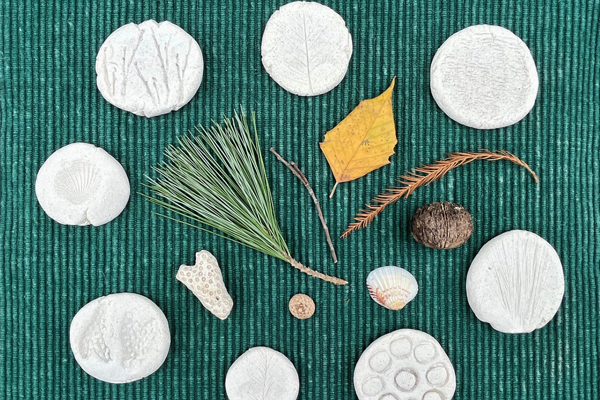
Materials:
Children use thin white paper, spring-found items (leaves, flowers, bark), and peeled crayons or pastels. Natural materials should be flat and dry for the best results.
How to Do:
- Place the object under the paper.
- Rub the side of a crayon gently across the top.
- Observe how patterns and veins appear.
- Label or identify each texture if desired.
Educational Value:
- Boosts observation and sensory matching
- Supports pressure modulation and wrist movement
- Introduces environmental awareness and botanical vocabulary
- Encourages calm, slow-paced exploration
Innovation Point:
An excellent fit for springtime art projects for preschoolers, this doubles as a science activity when children try to match textures to real plants on nature walks.
Seasonal Celebration Spring Art Activities for Preschoolers
31. Spring Greeting Cards
Overview:
Spring Greeting Cards are a cheerful and purposeful spring art activity for kindergarten and preschoolers that allows them to connect with family, friends, or community helpers. Whether for Earth Day, a spring festival, or to say “hello,” these cards offer heartfelt creativity.
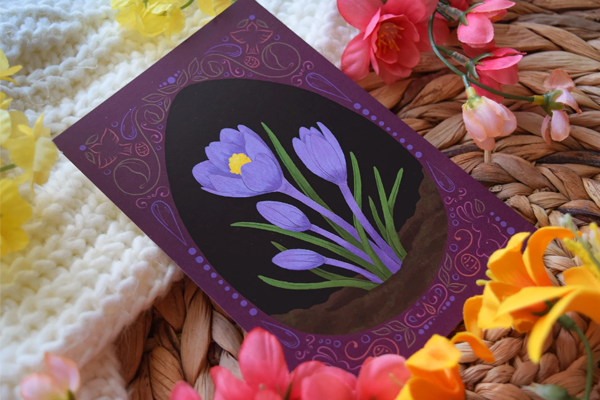
Materials:
Children use folded cardstock or construction paper, spring-colored markers, crayons, dot markers, stamps, stickers, and glue. Optional materials include flower cutouts, rainbow designs, or tissue paper for 3D effects.
How to Do:
- Fold a sheet of paper in half to create the card base.
- Invite children to decorate the front with spring imagery: flowers, sunshine, insects, or rainbows.
- Help them write or dictate a short message inside (“Happy Spring!” or “Thank you for helping us!”).
- Optionally, deliver to family members, staff, or local community helpers.
Educational Value:
- Builds early writing and communication skills
- Encourages empathy and kindness through giving
- Strengthens fine motor control with detailed decoration
- Reinforces seasonal vocabulary (sunshine, blossom, rain, bee, bloom)
Innovation Point:
This project connects art activities with preschoolers to real-world relationships. It’s also ideal for teaching social-emotional development, encouraging children to think of others and express joy through handmade art.
32. Spring Parade Crowns
Overview:
Spring Parade Crowns are lively, wearable spring art projects for preschoolers that make celebrations fun and personalized. Whether for Earth Day, an April performance, or a classroom spring walk, kids love creating their headgear.

Materials:
Children use long strips of construction paper (for the crown base), glue, flower and bug cutouts, tissue paper, stickers, markers, and optional sequins or feathers for flair.
How to Do:
- Fit a strip of paper around each child’s head and staple or tape it to size.
- Let children decorate the band with spring-themed elements.
- Add paper butterflies, bees, or flowers as “crown jewels.”
- Wear during a parade, concert, or classroom celebration.
Educational Value:
- Fosters self-expression and ownership over creative choices
- Supports scissor skills, spatial planning, and shape assembly
- Builds confidence in presenting or performing
- Strengthens classroom community and group pride
Innovation Point:
These crowns can double as spring-themed artwork for role-play, parades, or dramatic play centers—blending creativity with event participation.
33. Easter Egg Decorating (Paper Version)
Overview:
Paper-based Easter Egg Decorating is a colorful, clean, and safe version of the traditional activity. It’s one of the most beloved April art activities for preschoolers, adaptable for both individual creativity and group displays.

Materials:
Children use egg-shaped paper cutouts, crayons, dot markers, stickers, washi tape, and optional glitter or paint pens for fine detail.
How to Do:
- Provide each child with several egg cutouts.
- Let them decorate using patterns like zigzags, dots, and stripes.
- Encourage the use of spring colors and themes.
- Hang decorated eggs on an “egg tree” or string them into garlands.
Educational Value:
- Reinforces patterning and sequencing
- Enhances color awareness and design thinking
- Builds fine motor control through sticker application and coloring
- Introduces holiday traditions in an inclusive, creative way
Innovation Point:
Turn it into a storybook craft: kids decorate their egg, then name it and describe its “magical spring power.” Perfect for combining language arts ideas for preschool with seasonal fun.
34. Mother’s Day Fingerprint Flowers
Overview:
Fingerprint Flowers are a meaningful and simple spring art and craft idea for preschoolers, perfect for Mother’s Day. These keepsakes carry emotional value and celebrate personal connection.
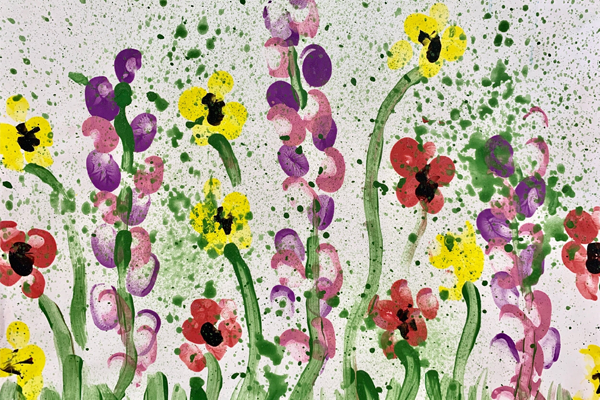
Materials:
Children use washable paint in spring tones, white or colored paper, green markers, and pre-written message slips or poems to glue on.
How to Do:
- Use thumbprints or fingerprints to create petals in a circular formation.
- Draw stems and leaves with markers.
- Write or glue on a message like “You help me grow” or “Happy Mother’s Day.”
- Mount on cardstock or turn into cards.
Educational Value:
- Enhances spatial and shape recognition (petals in a circle)
- Reinforces care, gratitude, and social-emotional learning
- Builds fine motor control and color planning
- Encourages storytelling through visual and written elements
Innovation Point:
These are highly personal spring craft prek projects—children’s fingerprints make the art uniquely theirs, turning a simple flower into a lifelong memory.
35. Spring Thank You Poster (Collaborative)
Overview:
This group activity transforms gratitude into a shared artwork. It’s one of the most heartwarming springtime art ideas for preschoolers and works well for thanking teachers, school staff, or parent volunteers.
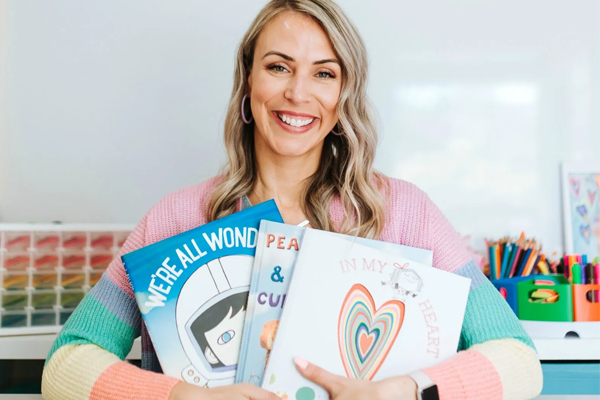
Materials:
Use poster board, large paper, or canvas. Provide children with paint, handprints, collage materials, and space for writing simple “thank you” phrases or names.
How to Do:
- Ask each child to contribute a drawing, handprint, or message.
- Arrange contributions into a bouquet, sunburst, or garden design.
- Glue everything together and finish with a big “THANK YOU” label.
- Present during a spring event or parent-teacher day.
Educational Value:
- Builds community pride and collaboration
- Teaches gratitude and social-emotional language
- Supports group planning and shared visual space
- Encourages turn-taking and teamwork
Innovation Point:
Turn it into a tradition—make a spring preschool art activity where a class creates one significant group gift each year. Document the process with photos and create a gratitude wall.
36. Spring Art Show Setup
Overview:
Why not turn your spring art into an event? The Spring Art Show is a classroom-wide display of everyone’s favorite spring creations. It’s more of a culmination than a single activity, but it adds context and purpose to all the others.

Materials:
Use all finished artworks (flowers, bugs, clouds, kites, etc.), bulletin boards, tables, and labels. Add title cards with names and ages, and optional “guided tour” cards where children describe their art.
How to Do:
- Let each child select 2–3 pieces they’re proud of.
- Mount and label them as if in an art gallery.
- Invite parents, staff, or other classes for a viewing.
- Offer snacks or music to create an event atmosphere.
Educational Value:
- Builds confidence and ownership in creative work
- Promotes language development when describing artwork
- Encourages pride in effort, not just outcome
- Develops social skills through hosting and sharing
Innovation Point:
This isn’t just art spring activities for preschoolers—it’s a whole experience. Let kids act as “docents” to talk about their work, turning art into a presentation and storytelling.
Tips on How to Let Children Enjoy Spring Activities
Use Visual Steps and Real Examples
Young children process visual information much better than long explanations. To make instructions clear and accessible, provide simple picture cards or real samples of the finished project. This is especially helpful in multilingual classrooms or with younger learners. With visual guidance, children are more likely to complete spring art activities for preschoolers with confidence and independence. You can also use images as a conversation starter about shapes, colors, and sequencing—an effective method for boosting engagement in preschool spring art projects.
Connect Art to Nature
One of the best ways to make spring art activities for preschoolers meaningful is to include natural materials. Let children collect leaves, twigs, flowers, or even small stones during outdoor play or walks. When they use these materials in projects like nature collages or leaf prints, it builds a stronger emotional connection. Children become more invested in their creations, and the results feel more “alive.” This hands-on approach supports both creativity and environmental awareness, key components of effective spring art projects for preschoolers.
Celebrate Every Child’s Work
Displaying children’s artwork gives them a sense of pride and reinforces the idea that their creativity matters. Create a rotating “Spring Gallery” on a bulletin board, or hang artwork along the windows with clothespins. Add each child’s name and a short description or quote. This not only boosts self-esteem but also encourages children to reflect on their work. Public displays are especially effective for promoting engagement in spring art activities for preschoolers over time, and they celebrate each child’s unique approach to springtime drawing or crafting.
Use Books and Music as Inspiration
Art becomes more engaging when it’s linked to a story or song. Reading a spring-themed book like And Then It’s Spring or singing songs like “Little Green Frog” sets the stage for crafting. After the story, let children create related projects—like flower art, springtime drawing, or animal crafts. This approach connects language, memory, and creativity, making each activity more memorable. It also helps with transitions and group focus. When combined with creative spring art activities for preschoolers, the results are richer and more meaningful.
Leave Space for Spontaneous Creativity
After the structured project is done, give children time to explore with leftover materials. These open-ended moments often lead to the most original and joyful work, like a child turning scrap tissue into a butterfly or unexpectedly layering colors. This is where creativity blossoms. Allowing this kind of artistic freedom helps children view themselves as capable creators, not just followers of steps. It’s also a core value of creative preschool art projects that focus on process over product, especially during seasonal themes like spring art activities for preschoolers.
Boost Creativity with the Right Tools
Preschool Art Easels
Double-sided and child-height, these easels are perfect for group spring art activities for preschoolers, with built-in trays and paper holders to keep painting organized and mess-free.
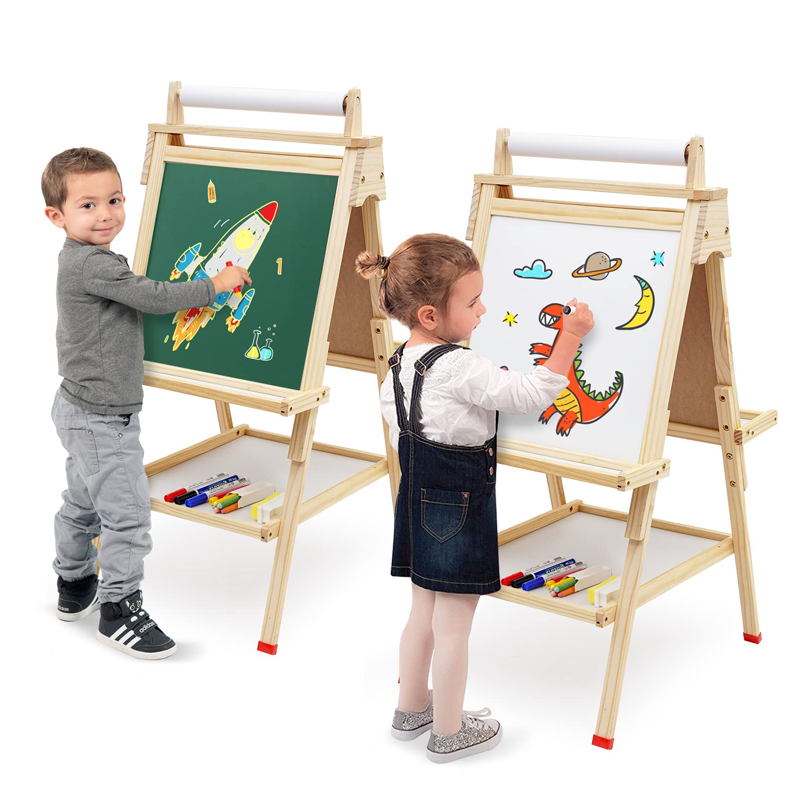
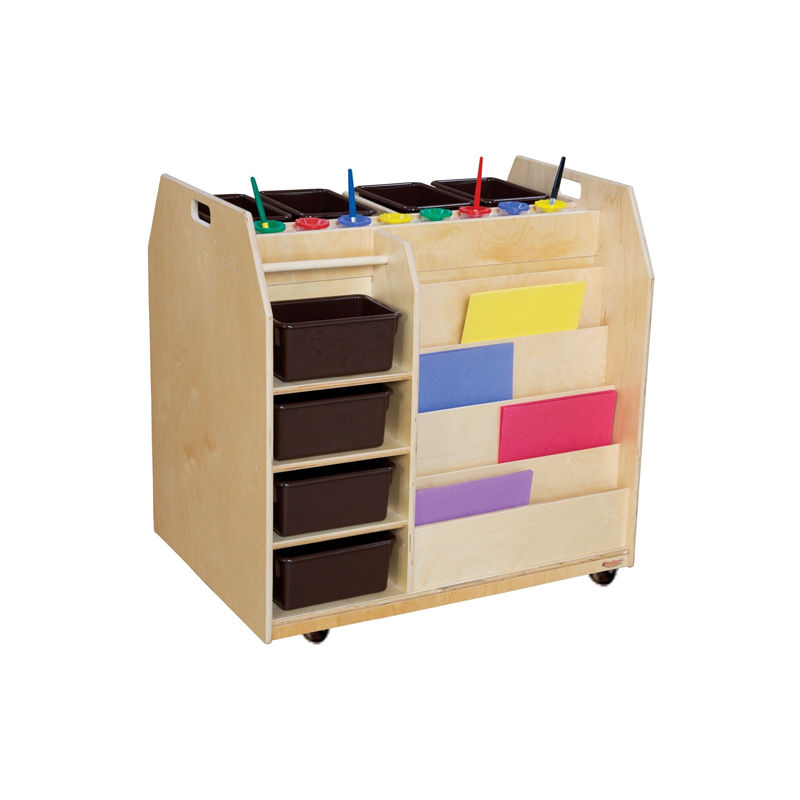
Art and Collage Storage Trolley
This mobile trolley helps teachers quickly store and rotate all materials needed for preschool spring art projects, saving space and prep time in busy classrooms.
Preschool Paintbrushes
Chunky, easy-grip brushes designed for little hands—perfect for painting rainbows, flowers, and all kinds of springtime drawing with control and confidence.
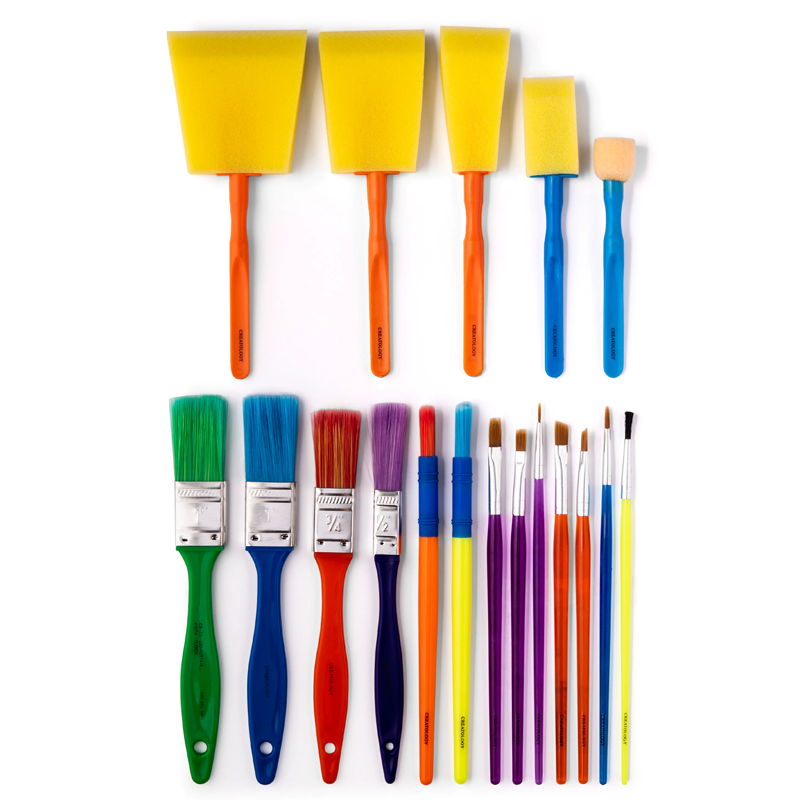
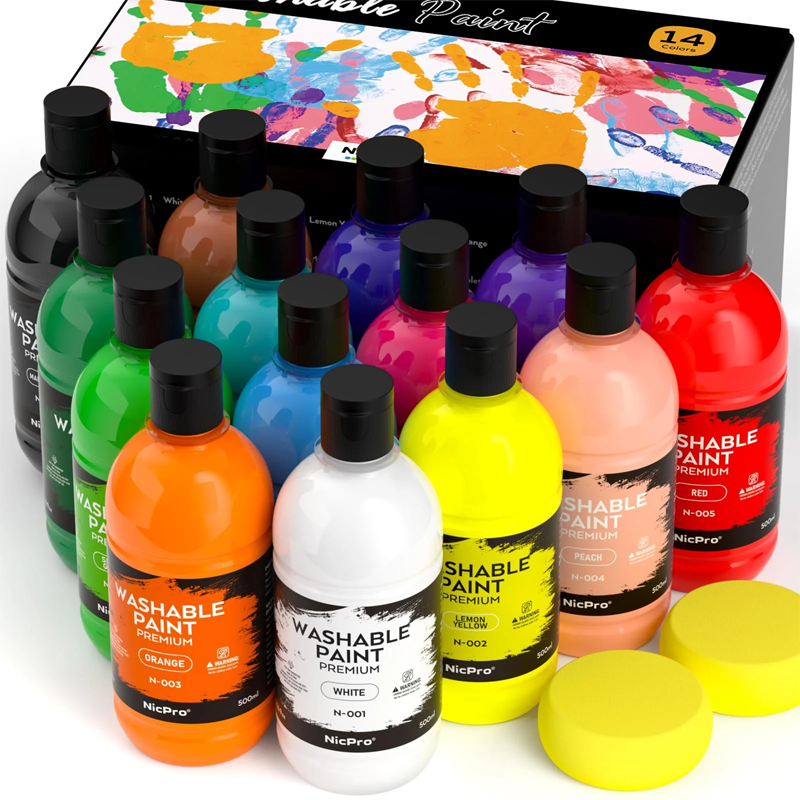
Washable Tempera Paints
Bright, non-toxic, and easy to clean, these paints are made for high-frequency use in spring art activities for preschoolers—no stains, no stress.
Preschool Art Accessories
From pom-poms to googly eyes, our complete range of safe, colorful accessories makes every spring craft for preschool creative, fun, and easy to manage.
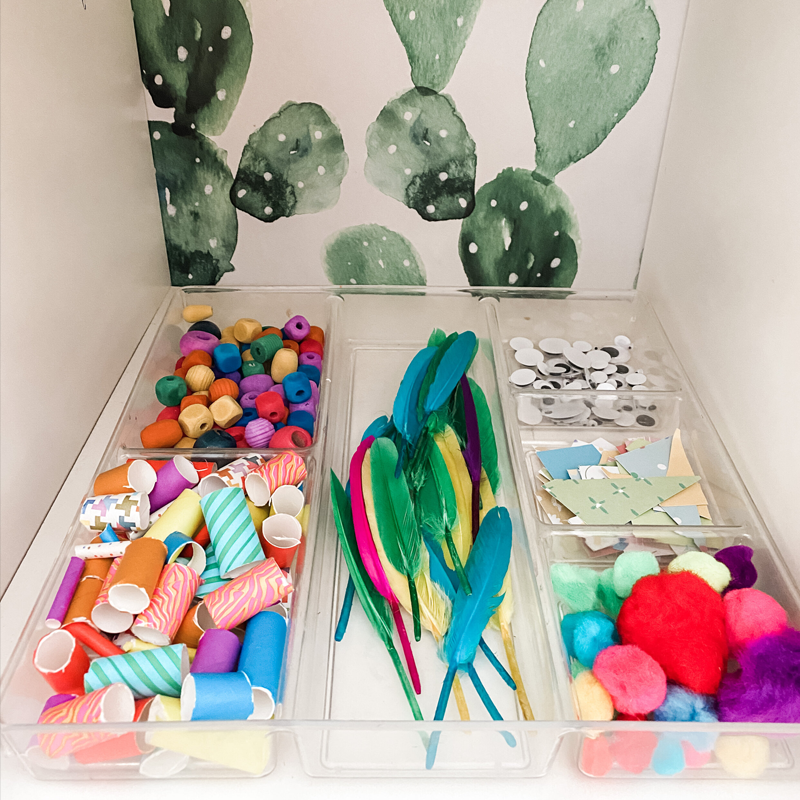
Send us a message if you have any questions or request a quote. Our experts will give you a reply within 48 hours and help you select the right product you want.
Frequently Asked Questions (FAQs)
1. Can these spring art activities for preschoolers be adapted for older children?
Yes. While these spring art activities for preschoolers are designed with 3–to 6-year-olds in mind, most projects can be extended for older children by adding steps, using more complex tools, or encouraging deeper storytelling. For example, older kids might write a poem to accompany their artwork or experiment with mixed media to enrich the project.
2. How can I adapt these activities for children with different developmental needs?
Simplify steps, offer pre-cut materials, or provide adaptive tools like wider brushes or grip-friendly scissors. Focus on sensory-friendly, process-based art where success isn’t based on the final product. Many of these spring art activities for preschoolers are naturally open-ended and easy to modify for inclusivity.
3. How can I create an art-friendly environment in my preschool or home?
Start by making art materials accessible and organized. Use child-height art easels, mobile storage like a collage trolley, and washable supplies. Display student work proudly and encourage exploration—an inviting space helps children feel that creative preschool art projects are part of their daily rhythm, not just an occasional activity.
Conclusion
Spring art activities for preschoolers offer far more than colorful results—they are pathways to growth, exploration, and self-expression in the early years. From nature-inspired projects and seasonal textures to creative storytelling through paint and collage, these activities give children the chance to build skills with joy and purpose. Whether it’s learning about symmetry through leaf prints or developing confidence through open-ended painting, each experience helps children grow cognitively, socially, and emotionally—one brushstroke at a time.
Creating successful art experiences doesn’t rely on fancy materials. It relies on thoughtful planning, safe and child-friendly tools, and environments designed to support young artists. That’s why schools and early childhood centers worldwide continue to invest in structured, well-equipped creative spaces. Behind many of these spaces are partners like Winning Kidz, whose purpose-built kindergarten furniture quietly supports thousands of spring art projects for preschoolers each year. When classrooms are set up with the right tools—well-organized, accessible, and safe—art becomes not just an activity, but a joyful part of daily learning.

